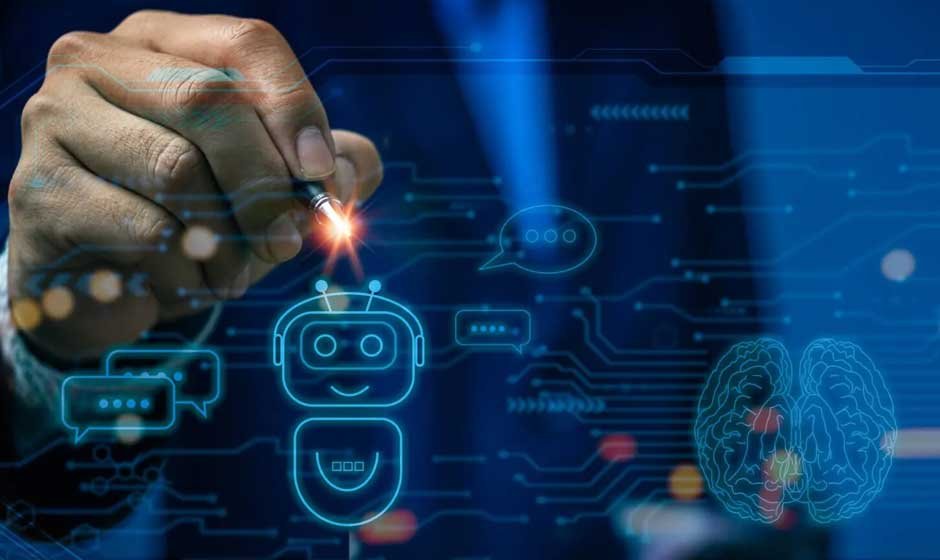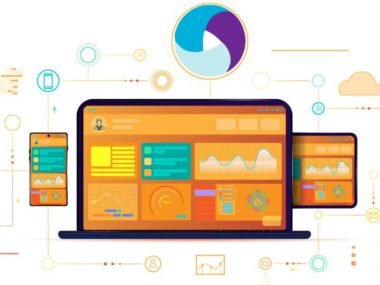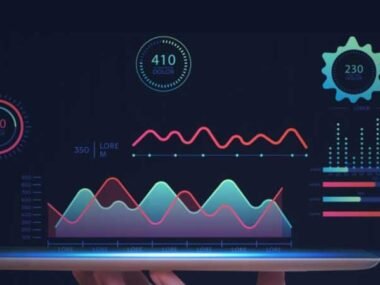Ensuring the quality of applications requires more than just the detection of bugs; it must also be optimized to be more efficient, effective, and faster. Traditional methods of manual and automated testing often fall short in the demands of modern development cycles, where CI/CD is the norm. AI testing tools like Test Impact Analysis (TIA) address this challenge by leveraging Artificial Intelligence (AI) to intelligently analyze code changes and determine which tests are most relevant.
Understanding Test Impact Analysis
Test Impact Analysis is the process of determining which tests should be run based on the modifications done to the codebase. TIA analyzes the impact of code changes to reduce the test suite size by targeting more relevant tests more likely to detect the errors due to recent code changes.
Optimization is a key requirement, more importantly in CI/CD pipelines, where time is of the essence, and running exhaustive tests on every change can slow down development.
Key components of Test Impact Analysis are:
- Code Dependency Analysis: Identification of the parts of the application that would be most affected by a change in the codebase.
- Test Prioritization:Identifying the tests that are more likely to catch defects pertaining to code changes.
- Resource Utilization: Running only necessary tests, saving time and computation.
How AI Enhances Test Impact Analysis
AI improves Test Impact Analysis by providing more precise and dynamic information about which areas of the code are most likely to have been affected by a change. Traditional TIA techniques rely mainly on static code analysis or manual change tracking, which is time-consuming and error-prone. AI, on the other hand, can:
- Automatically Detect Patterns: Using machine learning algorithms, AI can detect patterns in code changes and correlate them with test results from previous runs. This allows the tool to automatically predict the most relevant tests for each code change.
- Adaptive test selection: Unlike TIA tools, in which predefined rules are deployed, AI-based tools can be adaptive with regard to test outcomes historically and the developing nature of the codebase.
- Testing Scheduling with Intelligent Behavior:The execution schedule of the tests can be optimized by running those tests that are most likely to expose defects in advance, which further accelerates the CI/CD pipeline.
Top AI Testing Tools for TIA
There are several AI-powered testing tools available today. Some of these are as follows:
KaneAI
KaneAI by LambdaTest is a first-of-its-kind AI Test Assistant with industry-first AI features like test authoring, management and debugging capabilities built from the ground up for high-speed Quality Engineering teams. This AI testing platform enables users to create and evolve complex test cases using natural language, significantly reducing the time and expertise required to get started with test automation.
Here’s how LambdaTest uses AI:
- AI-driven Smart Test Impact Analysis:It uses machine learning algorithms to intelligently detect which tests should be executed based on the code changes. This reduces the overhead of running the entire test suite.
- Cloud-Based Scalability: It is a cloud-based platform; the resources can be dynamically scaled up according to the needs of the tests; only the relevant tests can run, and resources can be consumed efficiently.
- Real-time Feedback: Users running their tests on LambdaTest receive immediate feedback on the test-impact analysis, which helps them make decisions faster, improve the quality of the tests, and reduce time-to-market for releases.
Parasoft
Parasoft is yet another great provider of AI-powered testing tools, while its Test Impact Analysis tool is among a full set of testing solution sets. Parasoft uses its AI in the streamlining process of testing as it determines the impacted tests and optimizes test execution.
The key features of Parasoft’s Test Impact Analysis are:
- Automatic Test Selection: This continuously monitors code changes and maps them to identify which tests will have to be run in order to determine the impact of those changes.
- Risk-Based Testing: Here, Parasoft deploys the basic concept of risk analysis to determine test priorities by focusing more on areas perceived as risky and further ensures that resources are used optimally.
- Integration with CI/CD Pipelines: Parasoft’s TIA can be easily integrated into the CI/CD pipelines of tools such as Jenkins, GitLab, and more. Testers can execute relevant tests continuously in the lifecycle of software development.
SeaLights
SeaLights is one of the leading AI-powered continuous testing platforms that helps businesses enhance their testing efforts by giving meaningful insights regarding test coverage and efficacy. Unlike typical test automation tools, SeaLights combines Test Impact Analysis with coverage-based testing to provide a one-of-a-kind solution for test selection and execution.
The key features of Sealights’s Test Impact Analysis are:
- Test Impact Analysis:SeaLights uses AI to understand the impact of code changes, allowing it to dynamically select the tests that are most relevant for each change. This reduces the time and resources required for testing by ensuring only impacted tests are run.
- Test Coverage Optimization: it helps teams find the untested code region and set test cases accordingly, thus providing detailed coverage insights from the testing platform.
- CI/CD Support: SeaLights integrates smoothly with CI/CD pipelines to ensure testing becomes part of the cycle of development. The tool is automatically responsive to changes in the codebase and adjusts which tests to execute without human intervention.
- AI-Powered Risk Assessment:Using data-driven machine learning that analyzes code changes and historical test results, SeaLights enables teams to focus on the riskiest areas of the application.
SmartBear
SmartBear is one of the leading providers of AI testing tools, with solutions such as TestComplete and ReadyAPI centered on automating testing processes but applying AI for improved test execution and analysis. The Test Impact Analysis tool helps teams focus their testing efforts where changes have lately had the greatest impact.
The key features of SmartBear’s Test Impact Analysis are:
- AI-Driven Test Optimization: SmartBear’s AI analyzes the code changes and determines which parts of the code stand a higher chance of being affected, focusing tests on those areas rather than executing all tests.
- Regression Test Selection: Test Impact Analysis dynamically selects and prioritizes regression tests based on changes in the code to ensure that only necessary tests run.
- CI/CD Pipelines:SmartBear’s TIA features perfectly integrate into CI/CD workflows to ensure continuous and real-time analysis of code changes.
- Full Reporting:The testing platform generates detailed reports on the test execution, outlining which areas of the code are most susceptible to failure.
Applitools
Applitools is a visual AI testing environment, mainly offering Visual AI. This solution automatically detects any visual changes and issues in user interfaces. The AI capabilities of Applitools also reach beyond visual testing with Test Impact Analysis to ensure that only the most relevant tests are executed based on code changes.
Key Features of Applitools’s Test Impact Analysis are:
- Visual AI Testing: Applitools uses AI to automatically detect UI regressions and ensure that visual changes are tested without needing to write complex UI tests.
- Test Impact Analysis:Applitools analyzes code changes and identifies which parts of the UI are most likely to be affected, optimizing the testing effort.
- Cross-browser and cross-device testing:This platform allows testing across different browsers and devices, so Test Impact Analysis can adjust to a wide range of configurations.
Qualitia
Qualitia is an artificial intelligence-based test automation platform with the objective of streamlining, creating and executing automated tests. It makes a combination of AI and ML algorithms designed to help users maximize their testing efforts and assure high-quality release.
Key Features of Qualities Test Impact Analysis are:
- AI-based Test Impact Analysis:Qualitia uses AI for the change made in the codebase by finding out which tests would be most impacted by the same and, therefore prioritizes some tests without any futile executions.
- Keyword-Driven Testing: The keyword-driven automation is stated as the platform to make it easier for non-technical users to design automated tests and perform Test Impact Analysis.
- Cross-Platform Testing Support:Qualitia supports testing on multiple platforms, thereby ensuring that the Test Impact Analysis is relevant to various devices and environments.
Challenges and Considerations in AI-Driven Test Impact Analysis
Even though AI is promising much in respect to test impact analysis, there are a few such challenges that a firm needs to consider before it implements an AI-powered testing tool:
- Initial Setup Costs: Implementing AI-driven testing tools may require an upfront investment in terms of time and money for setting up the tools and also to integrating them with existing systems.
- Data Quality: The usefulness of AI in Test Impact Analysis is determined by the quality of the historical test data. Poor test data can result in erroneous forecasts and missing tests.
- The Complexity of AI Models: Certain AI-powered tools might need specialized knowledge to configure and use proficiently, especially for teams new to AI testing.
- Change Management: As AI-powered tools learn and evolve, proper management of how these tools are integrated into existing testing practices and used by team members is essential.
Best Practices for Leveraging AI in Test Impact Analysis
To get the most out of AI-powered Test Impact Analysis, organizations should follow the best practices:
- Start Small:Begin by integrating AI tools for a subset of tests or a specific feature, and then scale as the team becomes more comfortable with the tools.
- Collaborate with Development Teams: Test Impact Analysis works best when there is close collaboration between developers and testers. Developers can help identify code changes that may have a high impact on tests.
- Leverage Historical Data: To maximize the accuracy of AI predictions, feed the tools with historical testing data. This allows the AI to learn patterns and improve over time.
- Regular Monitoring and Optimization: Even with AI, regular monitoring and optimization of test suites are necessary to ensure that the tools continue to work as expected.
Conclusion
AI-powered testing tools are playing an important role in changing the way software testing is conducted. By employing Test Impact Analysis capabilities, these solutions allow teams to focus on the most relevant tests, decreasing redundancy and increasing overall efficiency. They help to improve testing operations, accelerate release cycles, and ensure high-quality software delivery without sacrificing full validation.
As software complexity and development demands increase, implementing AI-driven solutions becomes critical to preserving a competitive advantage. These solutions not only speed up the testing process but also allow teams to develop dependable, robust apps that match changing user needs and expectations.










